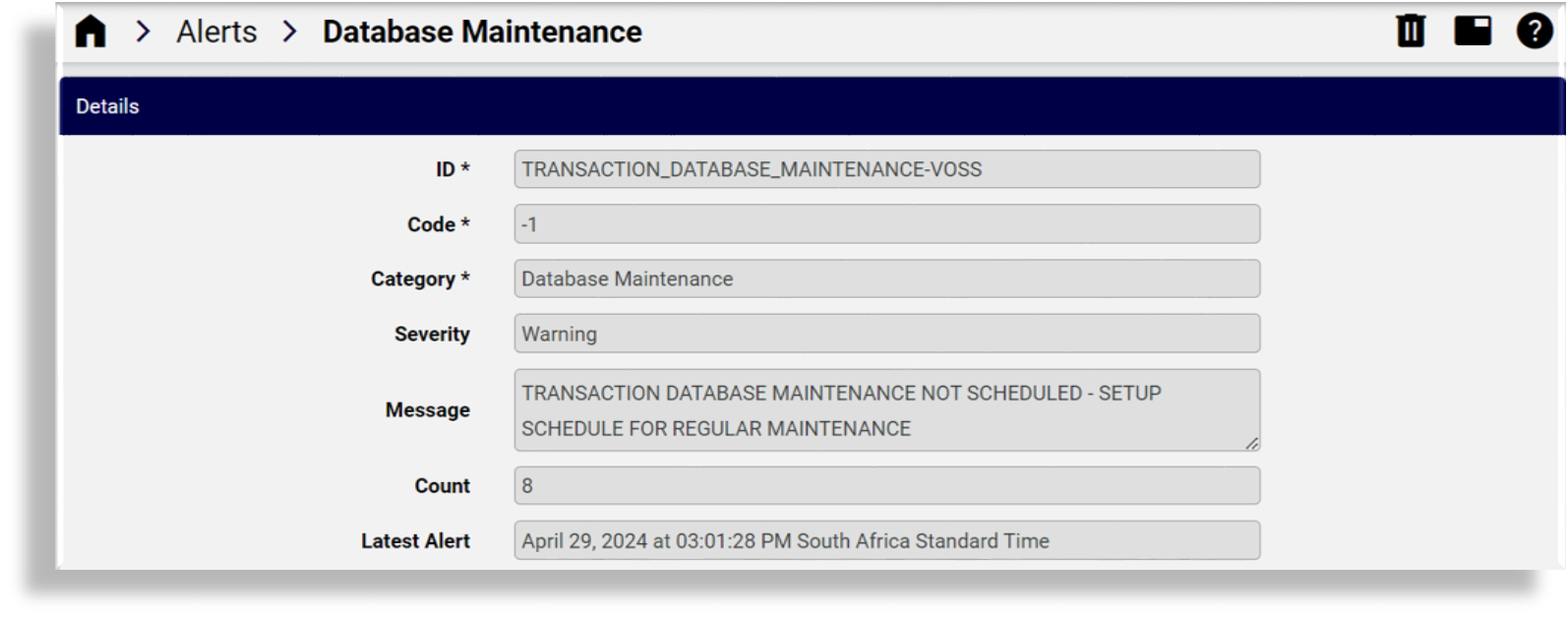Alerts#
Overview#
In VOSS Automate, alerts are messages that are triggered by back-end processes when certain conditions are met. While alerts typically indicate that the system is in an error state, the conditions that trigger alerts can be related to system performance, task completion, or any metrics that are important to the functioning of the system.
Alert notifications display via the Messages icon, and all active alerts are listed on the Alerts page. You can click the icon to open the list, or use the Search bar to locate the Alerts page in your system.

You can click on an alert in the list on the Alerts page for more information about the alert.

Alerts can be customized for the needs of the organization to ensure that relevant parties are notified promptly when specific events occur.
Alerts are enabled by default for the following functionality:
Database maintenance
Licensing
Change notifications
Number inventory availability
Provider admins can view all alerts, including alerts related to the database or licensing. Once any user clicks on an alert link via the Messages icon, the flag no longer displays in the notifications lists of other users. The alert will appear in the list until its deleted.
Related Topics
View Alerts#
This procedure displays the alerts page list, and allows you to inspect the details of a selected alert.
To open the Alerts page, click the toolbar Messages icon, or locate the page via the Search bar.

On the Alerts page, review currently active alerts.

The table describes the columns on the Alerts page summary list view:
Column
Description
Category
The alert category - either Database Maintenance, Licensing, Change Notification, or Number Inventory
Code
The error or warning code associated with the alert.
ID
The unique identifier, referencing the source of the alert.
Latest Alert
A timestamp for the last time this alert occurred.
Count
The number of times the same alert has occurred for a specific device. Alerts with the same ID and code updates the count of this alert as well as the last time that the alert occurred. This means that a single alert is shown on the list for each alert with the same ID and code.
Click on an alert that you want to inspect to open its Details page.
View the alert severity level (either Error, Warning, or Info), and in the Message field, view information around how to resolve the alert, for example, to renew a license, or to schedule database maintenance.
Once you’ve resolved the issue that raised the alert, you can delete the alert from the Alerts list.